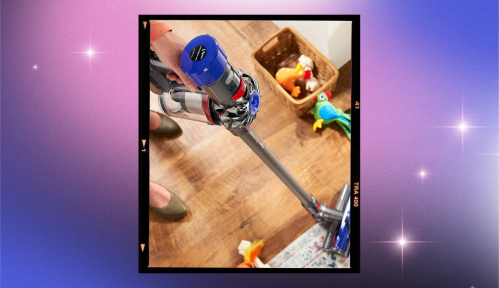Amid a global pandemic, mass unemployment, a modern civil rights movement, and an upcoming presidential election, it’s more important than ever to keep the lines of communication open to make sure thoughts and ideas regarding important issues are transmitted effectively. Because with conflicting schools of thought at play regarding high-tension topics, it doesn’t take much for a simple exchange to get quickly misconstrued and then heated in mere minutes. That’s why the skill of communicating with different personality types is an especially important one right now.
We all form decisions based on the way we process ideas, and each of the 16 Myers-Briggs types process ideas differently. (Don’t know your Myers-Briggs type? Learn more here.) For example, an ISTJ may not fully understand a person’s perspective until they’ve personally experienced it or heard it described in detail, whereas an ENFP might agree for the moment, but continue to explore it in their mind until they reach a firm conclusion—no firsthand experience needed.
Understanding how each Myers-Briggs type comes to their conclusions—and also how to appeal to each type and potentially open their mind—can help us all be better communicators
Understanding how each Myers-Briggs type comes to their conclusions—and also how to appeal to each type and potentially open their mind—can help us all be better communicators. Below, get tips about communicating with different personality types effectively, broken down by each of the eight Myers-Briggs functions.
Communicating with the different personality types of Myers-Briggs functions is possible—here’s how:
1. ISTJ and ISFJ: Refer to past examples
ISTJ and ISFJs have the cognitive function of introverted sensors (Si), meaning they lead with their past precedent. They funnel information through the lens of what they know to be true, and what they’ve experienced in the past. When communicating with different personality types keep in mind that introverted sensors benefit from you relating to an experience they may have had. And if you can’t relate, use concrete, specific details in describing your past experiences of what happened and how it made you feel.
2. ESTP and ESFP: Provide a hands-on experience
ESTPs and ESFPs are extroverted sensors (Se), meaning they are the ultimate doers. They learn best when they utilize their five senses. Communicating effectively with an Se-dominant type requires being in an environment where they can learn.
If you are training them on the job, walk them through exact processes, while letting them try it themselves. To convey the plight of the homeless, take them to volunteer at a shelter or soup kitchen for a first-person experience to really change their ideas. Recommend a movie focused on anti-racism to help them visualize. Although extroverted sensors might share strong opinions off the cuff, if you think they’ve got something wrong, don’t hesitate to show them their error. Their mantra might as well be “strong opinions, loosely held.”
3. ESTJ and ENTJ: Create logical arguments
ESTJs and ENTJs are extroverted thinkers (Te), meaning they respond best to logic, reason and linear analysis. To communicate an idea with them, come armed with data and research, and aim to argue your point with supporting evidence. Te-dominant types skew stubborn in their beliefs, because they typically aren’t challenged much, but they almost never argue with hard facts, so data is the best way to win them over. Avoid emotional appeals, unless you can explain why emotions matter because though ESTJs and ENTJs have strong feelings, they make decisions based off them.
4. ISTP and INTP: Ask probing questions, or suggest reading material
ISTPs and INTPs are introverted thinkers (Ti), which means they’re especially tough to convince; their internal framework for understanding is often unique, making it tricky to fully understand their thought process. To communicate with them better, ask probing questions to start figuring out how they think. Listen to their answers rather than convincing or attacking because they tend to become defensive or feel misunderstood. If you have any reading material to offer them, do share, because it will give them time to mull over ideas, process what they mean, and integrate them into their belief systems.
5. ISFP and INFP: Appeal to their values
The best way to communicate with an ISFP or INFP, who are both introverted feelers (Fi), is to befriend them. Get to know what they value, and what their core beliefs are. Introverted feelers are also slow to act, but if you show them how actions can really service their values, they will not hesitate to jump in, help a cause, educate, or donate.
6. ESFJ and ENFJ: Consider the betterment of the group
As extroverted feelers (Fe), ESFJs and ENFJs place group harmony above all else. To convince them of something, explain how doing so stands to benefit the group—like by patching up a friendship that’s grown sour, for instance. These types also tend to forgo personal best interests and self care if they think they are doing so to benefit others. If they aren’t taking care of themselves or are working too hard to earn someone’s affection in friendship or dating, ask if they’d tell a friend to take the same actions they are currently carrying out. If they can imagine their experience through the eyes of someone else’s well-being, they are more likely to listen.
7. ENFP and ENTP: Explore the possibilities
When communicating with an ENFP or ENTP (Ne), it’s best to understand their process and give them space to change their mind a lot. These extroverted intuitives need to explore all possibilities before they reach a conclusion, meaning they like to come at a problem from multiple perspectives. Even if you think you know the right answer, or are arguing what that answer is, expect an Ne-dominant type to take their time reaching the same result. Their extroverted intuitive function compels them to explore all potential before making decisions. So, give them information and share your thoughts, but really embrace the answer-seeking process with them. Talk through possibilities with them. Encourage growth and soul-searching whenever you talk to an ENFP or ENTP about a complex issue—they’ll get there, if you give them time.
8. INFJ and INTJ: Reference the bigger picture
As introverted intuitives (Ni), INFJs and INTJs always want to place an event or perspective in the context of the bigger picture. Ni-dominant types love to read and process. Suggest books, TED Talks, podcasts—anything nuanced and intellectual that will allow them to really wrap their mind around a problem and place it into the bigger picture. They may seem slow to form opinions at times (especially younger INFJs and INTJs), but once they do, those opinions are often steadfast.
Sign Up for Our Daily Newsletter
Get all the latest in wellness, trends, food, fitness, beauty, and more delivered right to your inbox.
Got it, you've been added to our email list.











